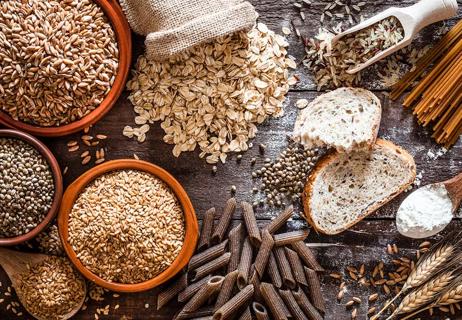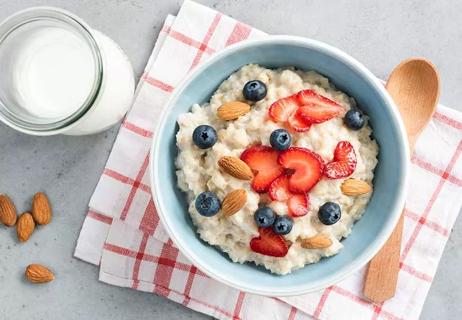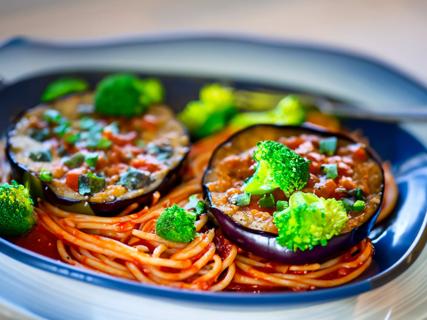Which carbs should you cut if you want to lose weight?

You desperately want to lose 5 pounds. Or maybe 10. But your scale won’t show you the number you’re looking for.
Advertisement
Cleveland Clinic is a non-profit academic medical center. Advertising on our site helps support our mission. We do not endorse non-Cleveland Clinic products or services. Policy
If you deep-sixed some starches, could you shed that stubborn weight?
The answer is yes.
While not all starches are bad, eating too many processed starches can stall your weight loss progress, our dietitians say. Here are four kinds to avoid:
Sandwiches are front and center on American menus. And cheese and crackers just may be our favorite appetizer.
Yet “white bread, crackers and pasta are starchy foods that are high in calories and carbs, but low in fiber, protein and nutrients,” says Anna Taylor, MS, RD, LD, CDE.
Adds Kristin Kirkpatrick, MS, RD, LD, “they’re total sugar — with no redeeming value whatsoever.”
These simple starches are digested so quickly that they spike your glucose levels just like sugar — and leave you hungry soon afterward.
Which can lead to overeating and (ugh) weight gain.
If you want to enjoy bread and crackers, choose whole-grain varieties (beware multigrain varieties; they’re mostly white flour). Look for brands with minimal added sugar and ingredients you recognize.
For a pasta alternative, try whole wheat or bean pastas. Their fiber will leave you feeling full longer.
Even better: Make noodles from zucchini (zoodles), parsnip (poodles), sweet potato (swoodles), or other veggies. Their valuable nutrients and fiber help to offset their calories.
Advertisement
Americans love breakfast cereal. Except that we eat it morning, noon and night.
“Breakfast cereals are my pet peeve,” says Dana Bander, MPH, RD, LD, CDE. “They’re basically precooked grains, processed into enticing shapes and advertised as healthy breakfasts.”
In reality, she says, cereal sends your blood sugars soaring — especially when served with milk, another rapidly absorbed carb.
That’s not a good thing, especially if you have prediabetes or diabetes. “And no one eats just one serving,” she adds.
But whole-grain cereal is not the answer, adds Julia Zumpano, RD, LD.
“Let’s face it, whole grain cereals are still processed. And most of them have some — if not a ton — of added sugar so they won’t taste like cardboard,” she says.
If you love cereal for breakfast, try cooking whole grains like oats, quinoa or barley.
“Overnight oats are super easy. You can eat them cold, and top with chopped nuts and fresh fruit,” says Zumpano.
Even better: Power through the morning with a high-protein breakfast like eggs, part-skim cottage or ricotta cheese, or Greek yogurt with toasted oats, nuts and/or fruit.
White rice may be a staple of the Asian, Mexican and other cuisines we love. But because it’s stripped of fiber and protein, it’s just another empty carbohydrate, says Anna Taylor.
Like other empty carbs, white rice is quickly digested and absorbed, making your blood sugar rise faster.
“This is typically followed by increased hunger for more processed carbohydrates or sugary treats,” she cautions.
“Eating empty carbs can lead to a vicious cycle of cravings that can completely derail your well-intentioned eating plan.”
Try replacing the white rice in your Japanese, Thai or vegetarian dish with the real deal: brown or wild rice (or another whole grain, like quinoa).
It will leave you feeling satisfied sooner, so you’re less likely to keep on eating.
Fried, baked, mashed, hash browns — who doesn’t love potatoes?
Truthfully, not many of us.
But a word of caution: “Skinless white potatoes have a very high glycemic index — meaning they raise your blood sugar quickly,” says Kate Patton, MEd, RD, CSSD, LD.
Depending on what you eat with a skinless white potato, you may experience a blood sugar crash and quick drop in energy. “You can start to feel hungry fairly soon afterward,” she says.
So, however you like your potatoes, try to incorporate their skin. The skin’s fiber will slow your digestion and keep you full longer. (You’ll benefit from potatoes’ potassium, phosphorus, and vitamins B and C, too.)
Advertisement
“Try making mashed potatoes with the skin on,” she says. “Or roast redskin potatoes with your other favorite veggies, add your favorite oil, and season with garlic and pepper.”
Old habits die hard, and cutting empty carbs can be a challenge. But it’s important to limit the processed foods and boost the fresh produce in your diet.
“If you eat healthy enough, long enough, you can lose weight,” says Bander.
“You may also find that you need less medicine to manage your diabetes, blood pressure, cholesterol or pain.”
Advertisement
Learn more about our editorial process.
Advertisement

Whole-food carbs come with major health benefits, like fiber and antioxidants

The amount you need depends on several factors, such as age, sex and activity level

Here’s why you crave them and how to curb them

The eating plan is ideal for fueling high-intensity activities (but not for weight loss)

Opt for complex carbs that are full of fiber or protein

Why a clean diet is so important

A delicious twist on this classic dish

Type 2 diabetes isn’t inevitable with these dietary changes

Applying a hot or cold compress can help with pain